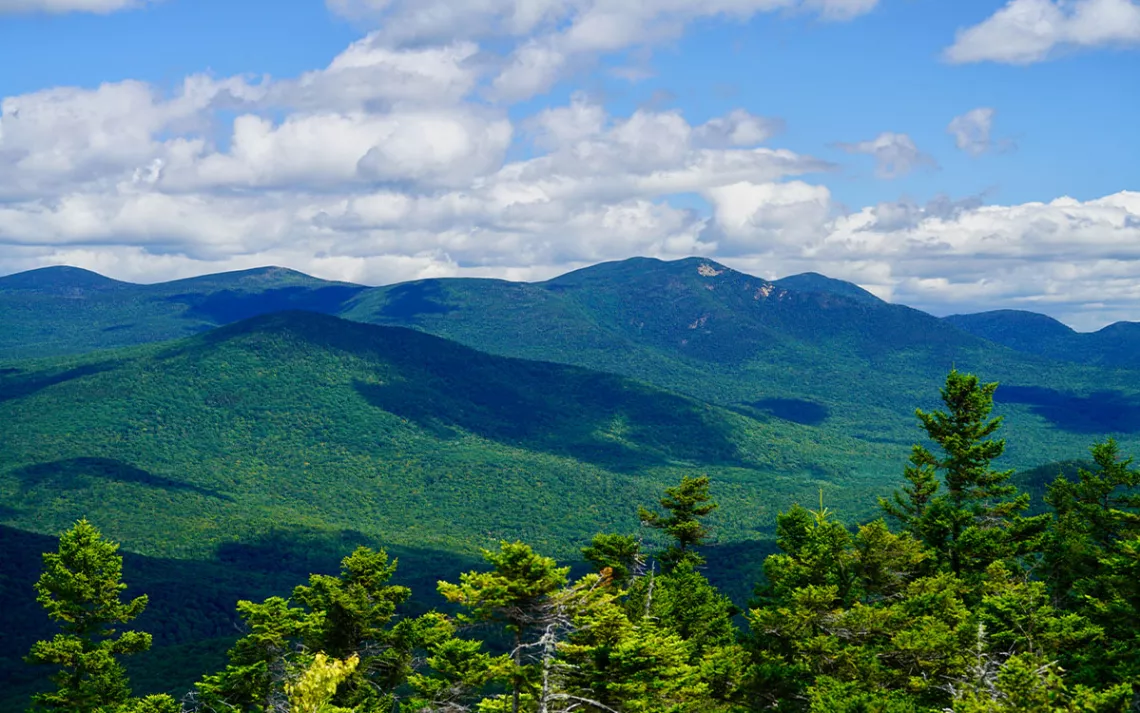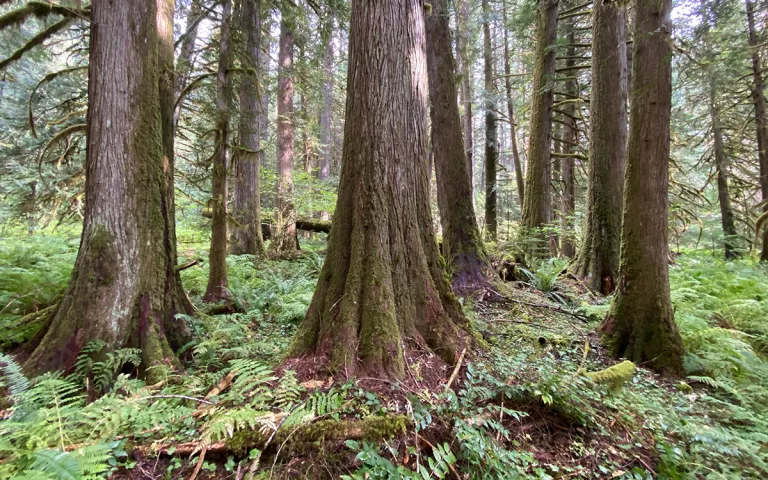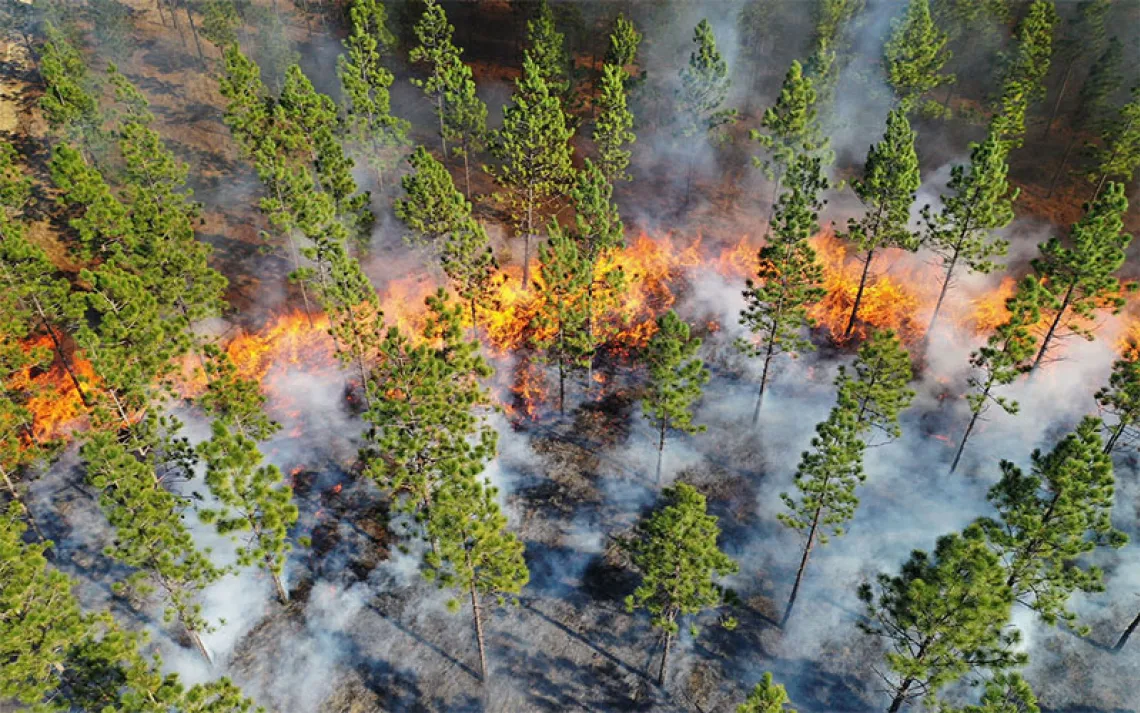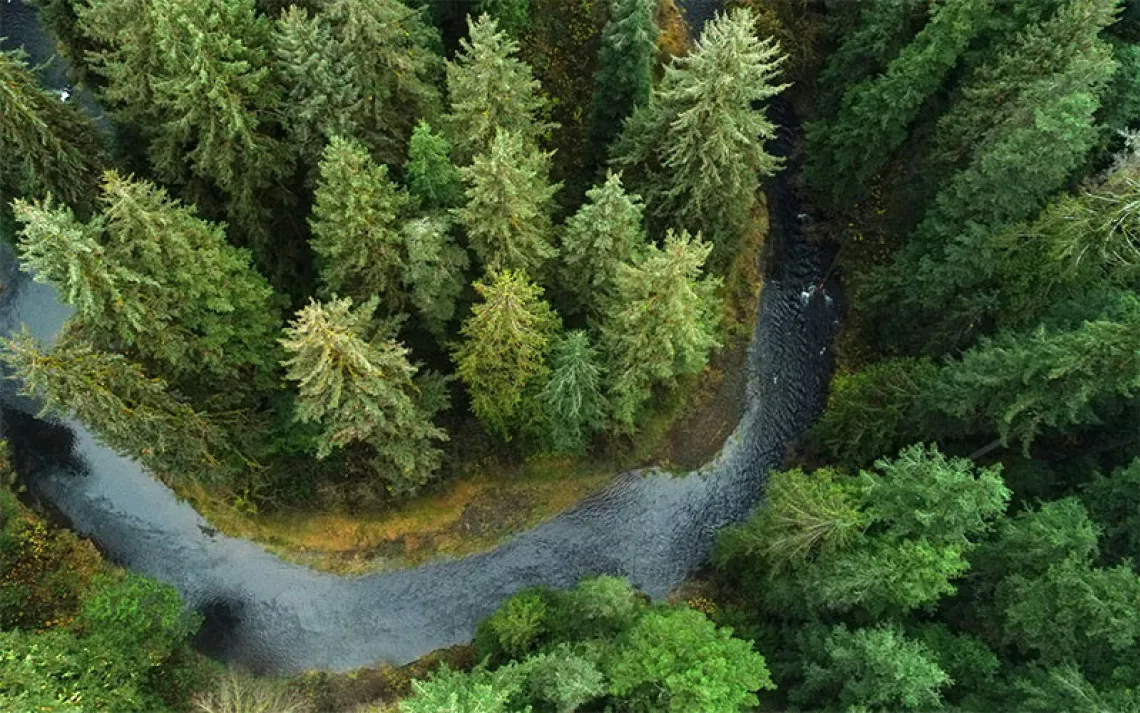Here’s How the New Old-Growth Amendment Could Put Forests at Risk
Conservation groups say federal agencies are missing an opportunity to save remaining old growth

A view of the Sandwich Range Vegetation Management Project area in New Hampshire's White Mountains National Forest. | Photo by Zack Porter
The forests within two logging projects in New Hampshire’s White Mountain National Forest are studded with superlatives. The Tarleton project includes the largest lake nested entirely within the White Mountain National Forest. The Great Gulf Wilderness, immediately adjacent to the Peabody West project, is the White Mountain’s first designated wilderness area and lies in the shadow of Mt. Washington, the tallest mountain in the Northeast.
These forests—replete with white pine, beech, maple, birch, spruce, and eastern hemlock—are “stunning,” says Zack Porter, a cofounder and executive director of the Vermont-based forest advocacy group Standing Trees. According to Porter and even the US Forest Service, they also include mature or old-growth stands. In other words, they are exactly the kind of place President Biden hoped to protect when he issued an executive order in 2022 directing federal agencies to inventory and “safeguard mature and old-growth forests on federal lands.”
But that doesn’t appear to be happening, not in the White Mountain National Forest or in at least two dozen other forests across the country. Both the US Forest Service and the Bureau of Land Management are currently pursuing logging projects across more than a quarter of a million acres of mature and old-growth forests from New Hampshire to Oregon, reports a coalition of conservation groups called the Climate Forests Campaign. In fact, between December 2023, when the Forest Service announced its proposal to amend management plans for each of the 122 national forests, and April of this year, the agency has pursued logging projects across more than 116,000 acres within old-growth forests.
In June, the Forest Service released a draft amendment that includes numerous logging exceptions under the guise of “proactive stewardship,” which allows the agency to log an old-growth stand out of existence, said Randi Spivak, the public lands policy director at the Center for Biological Diversity. Now, forest advocacy groups are mounting both legal challenges and grassroots advocacy to prevent some of the logging projects from moving forward.
At least eight lawsuits were filed this year alone, including one by Standing Trees through the Vermont Law and Graduate School’s Environmental Advocacy Clinic. Other groups have also filed lawsuits in Montana, North Carolina, and Oregon to protect logging projects inside the Bitterroot National Forest, the Nantahala National Forest, and the Fremont-Winema National Forest and Willamette National Forest, respectively.
Meanwhile, national and regional groups like the Sierra Club, Oregon Wild, Center for Biological Diversity, and others within the Climate Forests Campaign are galvanizing their supporters to comment on the draft old-growth amendment through the public comment process, which ends September 20. They hope to convince the Forest Service to adopt a more definitive approach toward protecting mature and old-growth forests, one that includes a pathway to establishing clear guidelines around what the agencies can and can’t log.
“We look forward to engaging in this process to ensure the amendment not only retains but increases the amount of old-growth forests across the country. President Biden rightfully acknowledged this in his executive order,” Alex Craven, the Sierra Club’s forest campaign manager, said. “The agency’s current proposal does not fulfill that vision. Shifting our approach to national forests from resources meant for extraction to natural wonders worth preserving is long overdue.”
The ongoing logging projects and the amendment come at a pivotal time for forests. Researchers now know that mature and old-growth trees are crucial to reducing carbon emissions—the bigger the tree, the more carbon it sequesters and stores. Yet, these trees also face a barrage of challenges, including fire, climate change, and invasive species. The agency says that to help preserve what’s left of old growth, logging, often described using various terms that suggest restoration, is the best way to keep these threats in check.
Jim Furnish, a retired US Forest Service deputy chief who believes that old-growth forests should be left standing, said the contention lies in how best to protect mature and old-growth forests. Everyone seems to agree that mature and old-growth forests are important, Furnish said, but there’s disagreement on how to save what remains.

Flat Country area in Oregon's Willamette National Forest. | Photo courtesy of Oregon Wild
For some foresters with state and federal agencies, that means intense management, said Terry Baker, a former forester at the US Forest Service and the current CEO of the Society of American Foresters. “When we think about the overall amendment, my perspective is that it is trying its best to meet a lot of needs, which can always be a very challenging thing to do,” Baker told Sierra. “Just like you can't go out and say, ‘We're going to cut every tree,’ …. we can't draw a line around every forest and say, ‘it's going to stay that way forever.’”
However, many conservationists say that’s not what they’re trying to do. They make the case that federal lands play a unique and outsize role because they hold most of our oldest remaining stands and are intended to be managed for the greatest public good. In an era of climate change and biodiversity loss, advocates contend the protection of these forests should be emphasized. The Old Growth Amendment states a need for increasing distribution and abundance of old-growth across the National Forest System but fails to provide meaningful standards to ensure that need is realized.
“[The Forest Service] uses these terms like age class diversity, resilience, and sustainable harvest … and that sounds catchy and compelling to, I think, almost anyone, but when you look under the hood, what they're trying to create is not the diversity that is natural to this forest,” Porter told Sierra. “They're creating an artificial landscape that is being managed primarily to meet economic goals.”
Those goals are frequently met with logging. In recent years, the Forest Service has been required to log as much as 4 million board feet annually. According to the Southern Environmental Law Center, that’s enough to circle the planet 30 times over. In the White Mountains, foresters plan to log more than 4,000 acres across three projects—Tarleton, Peabody West, and Sandwich—and build over a dozen miles of roads in Peabody West alone.
Once the old-growth forest amendment is finalized, likely by the end of the year, the Forest Service plans to implement an adaptive management strategy that allows each national forest to create a special policy outlining how it should protect and promote old growth. These plans are intended to focus on tribal and local knowledge to account for the variability of forests across the country.
Meanwhile, conservation groups are still waiting to see the results of a December 2023 directive from Chris French, the deputy chief of the Forest Service, directing forest managers from all regions to review all logging in old-growth forests. According to Porter, some forest managers are recording old-growth in their federal inventory while undercounting it when planning logging projects. “In the accounting of what they're actually logging … they're using a whole different definition of old growth,” said Porter. “So when they proposed these logging projects, like the Sandwich project, the Tarleton project, the Peabody West project, they're not admitting that they're cutting any old growth.”
According to some forest advocates, this form of counting could leave the state of mature and old-growth forests worse off than they were before. “It's possible to wind up with less old growth than more under the [National Old Growth Amendment], Spivak, from the Center of Biological Diversity, said. “So, we are pushing for significant changes. There's actually no prohibition against cutting old-growth trees. There's no clear straight-up prohibition, which there should be.”
 The Magazine of The Sierra Club
The Magazine of The Sierra Club



